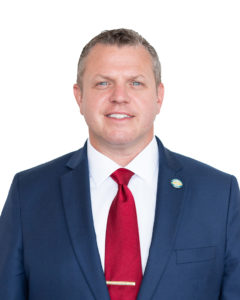
Commissioner Jason E. Glass
The 2021-2022 school year is set to start up in just a few weeks and many of us – educators and parents alike – are contemplating what the next year will look like.
I know all of us have been dreaming of the day when we could “return to normal.” While I have longed for the days when my family and I could go back to taking a trip to the movies or a ballpark without fear of contracting COVID, I want us to aim higher than just thinking about going back to our old ways.
Instead of returning to our traditional way of doing things, I think we should give serious consideration as to how we can return to a better than normal school year.
In various meetings I’ve been having with people, I’ve been asking them what we should amply, what we should hospice and what we should create. The activity is the creation of a professor at the Harvard Graduate School of Education and prompts people to think about what a post-pandemic world should look like: what things we should keep, what things we should let go of to create space and what new things are needed.
One of the few good things to happen because of the COVID crisis was that it forced all of us to be more creative in how we view education. We had to rely less on our traditional stand-and-deliver-a-lecture method and find new ways to engage students. While some of our students struggled to keep up with a demanding schedule and no face-to-face interaction with their teachers, other students thrived in the virtual environment.
I did this activity with the students from across the state who serve on the Commissioner’s Student Advisory Council. There were many things they liked about how school operated last year. I heard that they appreciated how they could see their assignments through Google Classroom and how flexible their schools were as they transitioned from in-person to virtual learning. A few of the students mentioned how with everyone using virtual learning, homebound students were able to finally experience the same type of education all their classmates were receiving.
Not surprisingly, one of the things our Student Advisory Council members said they wanted to hospice was traditional lecturing.
“A lot of time (virtual classes) started off with listening to a lecture for 50 minutes just as we would in an in-person class,” said Sofie Farmer, a recent graduate of Gatton Academy. “It was really ineffective online and was still ineffective in person.”
Our students asked for stigma-free spaces for students, teachers and other education community members so individuals can feel comfortable addressing mental health issues. Council members also called on schools to use innovative methods to rethink education in the Commonwealth.
“Don’t be scared to push the needle to rethink the education system,” said Logan Justice, a rising senior at Paul Laurence Dunbar High School (Fayette County). “… Don’t create your thought of a good student, because we’re all different. We all have different, unique abilities, skills and talents. Don’t create a school system based on one mold of a student.”
I also tried this idea in May with the Kentucky Department of Education (KDE) staff and I saw some common themes. They also preferred more flexibility with how we traditionally did things, including more online training and more customization on the services we offer, because one size does not fit all.
And some of the ideas KDE staff wanted to create or amplify include time for teachers to plan, collaborate and mentor to help make teaching a more sustainable career, as well using the lessons learned from the pandemic to reimagine education.
These are just some of the ideas we’ve heard.
At KDE, we will be working to learn more about what was effective and what wasn’t during the past year, which will help shape our work going forward. Let’s use all the information we have gained during this tumultuous time to create a new normal in our schools that better meets the needs of all of our students.



Bowling Green Independent School District did not choose to use the four day in person school week. However, my educator family members and family teaching in districts using 4Days had all thumbs up. They said having Friday as a designated PD, Lesson Planning, School Staff Meeting, ARC Meeting, etc. day brought calm and order to everyone. The over all stress level in the workplace went very low. Parents knew exactly what day they would or could meet with school staff. Students had Friday as a designated catch-up day. I’m sure there are some negative aspects to 4Day Schedule, but it’s hard to believe it wouldn’t be a much more efficient way to
operate.
I loved the 4-day school week that was utilized in JCPS. It allowed students and teachers a day to catch up. Students used the time to get caught up on assignments, get additional help through remediation sessions and one-on-one tutoring, attend doctor’s appointments without missing class time, and tend to their mental health. Teachers used their day to plan, grade, provide meaningful feedback, communicate with parents, collaborate with other teachers, and attend meetings. This allowed the other 4 days of the school week to be entirely focused on instruction and everyone’s mental health was improved because we had time scheduled in to get things done while maintaining a balance with our personal lives. I would love to see this 4-day model continued in the “new normal”.